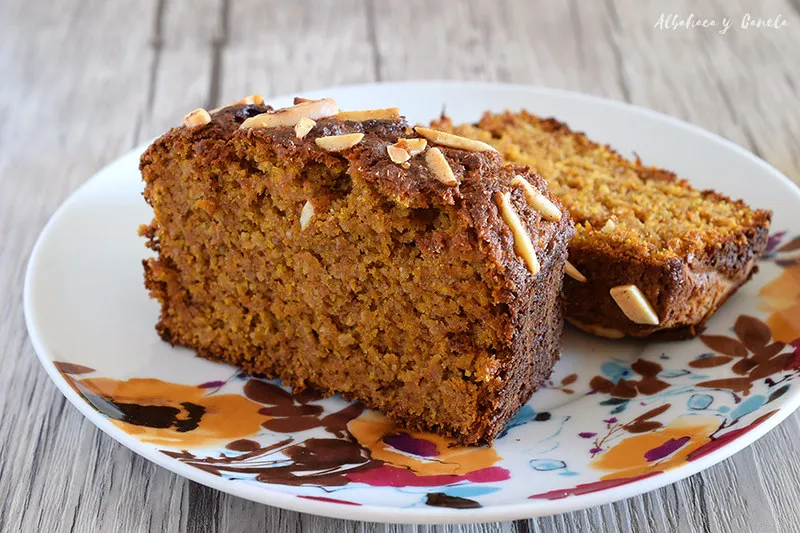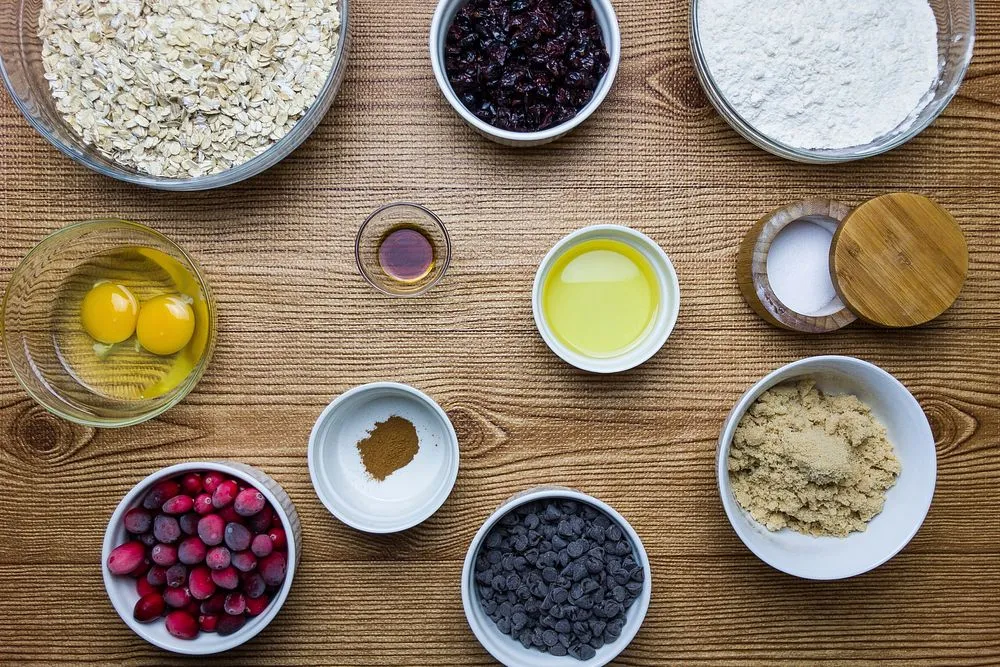The Best Fluffy Pancakes recipe you will fall in love with. Full of tips and tricks to help you make the best pancakes.
If you’re looking for a quick, healthy, and delicious treat, this Vegan Oat Cake in One Bowl is just what you need! Made with wholesome ingredients like rolled oats, almond milk, and natural sweeteners, this cake is not only dairy-free and egg-free but also super easy to prepare. With just one bowl and a few simple steps, you’ll have a moist and flavorful oat cake perfect for breakfast, a snack, or dessert.
This recipe is also highly customizable—you can make it gluten-free, oil-free, or naturally sweetened based on your preferences. Whether you’re a beginner or an experienced baker, this one-bowl method ensures minimal cleanup and maximum taste. So, let’s get started and bake a wholesome oat cake that everyone will love!
Why You’ll Love This Vegan Oat Cake
Why You’ll Love This Vegan Oat Cake
This Vegan Oat Cake in One Bowl is more than just a simple recipe—it’s a wholesome, delicious, and fuss-free treat that fits into any lifestyle. Whether you’re a busy professional, a health-conscious eater, or simply someone who loves easy homemade baked goods, this oat cake is perfect for you. Here’s why you’ll love it:

1. Quick and Easy – Minimal Effort, Maximum Flavor
One of the best things about this recipe is its simplicity. You only need one bowl, which means less cleanup and faster preparation. No need for fancy equipment or multiple mixing steps—just combine, mix, bake, and enjoy. Perfect for busy mornings, lazy afternoons, or last-minute dessert cravings.
2. Healthy and Nutritious – A Guilt-Free Treat
This oat cake is packed with fiber, healthy carbs, and plant-based goodness. Unlike traditional cakes loaded with refined flour and sugar, this recipe uses:
- Oats – A heart-healthy whole grain that keeps you full longer. Oats are also known for their many health benefits, including supporting digestion, helping to lower cholesterol, and stabilizing blood sugar levels. According to Healthline, oats contain powerful antioxidants, promote gut health, and can even help with weight management.
- Natural Sweeteners – Maple syrup, coconut sugar, or mashed bananas for a refined sugar-free option.
- Plant-Based Ingredients – No dairy, no eggs, making it completely vegan.
- Healthy Fats – Can be made oil-free using nut butter or applesauce.
It’s a great breakfast alternative to sugary cereals and processed pastries while still being satisfying and delicious.
3. Customizable to Fit Your Preferences
Another reason to love this oat cake is its versatility. You can tweak it based on what you have on hand or your personal taste preferences:
- Make it gluten-free by using certified gluten-free oats or oat flour.
- Go oil-free by replacing oil with applesauce or mashed bananas.
- Enhance the flavor with cinnamon, nutmeg, or vanilla.
- Add mix-ins like chocolate chips, nuts, dried fruit, or shredded coconut for extra texture and flavor.
4. Perfect for Any Occasion
This cake is soft, slightly chewy, and subtly sweet—making it perfect for breakfast, an afternoon snack, or even dessert. Enjoy it with a cup of tea, coffee, or a drizzle of nut butter for an extra special treat.
If you’re looking for more inspiration to incorporate oats into your baking, check out this Oatmeal Cake recipe from Fast Prep Kitchen for another delicious take on the versatile oat.
Whether you’re making it for yourself, your family, or a gathering, this vegan oat cake will be a hit.
Ingredients for the Best Vegan Oat Cake
The secret to a great vegan oat cake lies in the right balance of wholesome ingredients. Each component plays an important role in ensuring the cake is moist, flavorful, and nutritious. Below is a breakdown of the essential ingredients, along with some substitutions and variations to suit different dietary needs.
1. Main Ingredients – The Base of the Cake
These ingredients form the foundation of the oat cake, giving it structure, texture, and moisture:
- Rolled oats or oat flour – Oats are the key ingredient in this recipe, providing fiber, protein, and a hearty texture. You can blend rolled oats into a fine flour for a smoother consistency or use whole oats for a more rustic texture.
- All-purpose flour or whole wheat flour – Helps bind the ingredients together and gives the cake a tender crumb. If you want a gluten-free version, you can use oat flour or a gluten-free flour blend.
- Baking powder and baking soda – These leavening agents help the cake rise and keep it light and fluffy.
- Almond milk or any plant-based milk – Adds moisture and binds the ingredients together. You can use soy, oat, coconut, or cashew milk depending on your preference.
2. Natural Sweeteners – Healthier Alternatives to Refined Sugar
Instead of using white sugar, this recipe relies on natural sweeteners to provide sweetness while keeping the cake healthy:
- Maple syrup or agave syrup – These liquid sweeteners blend well with the ingredients and add a mild caramel-like flavor.
- Coconut sugar or brown sugar – A great alternative to white sugar that adds a rich, deep sweetness.
- Mashed banana or applesauce – Not only do these add natural sweetness, but they also help keep the cake moist and act as a binding agent.
3. Binders and Moisture Enhancers – Replacing Eggs the Vegan Way
Since this cake is vegan, it doesn’t contain eggs. Instead, we use plant-based binders to hold everything together:
- Flaxseed or chia egg – Mixing one tablespoon of ground flaxseed or chia seeds with three tablespoons of water creates a gel-like texture that works as an egg substitute.
- Applesauce or mashed banana – These ingredients provide moisture and help create a soft, tender texture.
- Nut butter or coconut oil – Adds richness to the cake and helps with moisture. If you prefer an oil-free version, you can use more applesauce instead.
4. Flavor Enhancers – Making the Cake Even Better
To elevate the taste of your oat cake, adding a few extra ingredients can make a big difference:
- Vanilla extract – Enhances the overall flavor with a warm and sweet aroma.
- Cinnamon, nutmeg, or cardamom – Adds a hint of spice and depth to the cake’s flavor.
- A pinch of salt – Balances the sweetness and enhances the other flavors.
5. Optional Add-Ins – Customizing Your Cake
This oat cake is highly adaptable, allowing you to mix in different ingredients for extra texture and flavor:
- Chocolate chips – For a touch of indulgence.
- Nuts and seeds – Walnuts, almonds, or sunflower seeds add crunch and extra nutrition.
- Dried fruits – Raisins, cranberries, or chopped dates provide natural sweetness and chewiness.
- Shredded coconut – Adds a tropical flavor and pairs well with vanilla or cinnamon.
Ingredient Substitutions and Variations
- Gluten-free option: Use oat flour or a gluten-free flour blend instead of wheat flour.
- Oil-free option: Swap coconut oil with more applesauce or nut butter.
- Sugar-free option: Use mashed bananas or date paste instead of sweeteners.
By using these wholesome ingredients, you can create a flavorful, nutritious, and satisfying oat cake that fits your dietary preferences. Now that we’ve covered the ingredients, let’s move on to how you can prepare this delicious cake in just one bowl.
How to Make Vegan Oat Cake in One Bowl
One of the best things about this vegan oat cake is how simple it is to prepare. With just one bowl and a few basic steps, you can make a delicious and wholesome cake without the hassle of multiple dishes. Whether you’re a beginner or an experienced baker, this method ensures minimal cleanup while delivering maximum flavor.

1. Prepare Your Ingredients and Baking Dish
Before you start mixing, it’s important to have everything ready:
- Preheat your oven to 175°C (350°F). This ensures the cake bakes evenly.
- Grease or line a cake pan (8-inch round or square) with parchment paper to prevent sticking. If making muffins, grease a muffin tin or use liners.
- Measure all your ingredients in advance for smooth preparation.
- 2 cups rolled oats
- 1/2 cup mashed bananas or apple sauce
- 1/2 cup maple syrup or coconut sugar
- 1 teaspoon vanilla extract
- 1 teaspoon baking powder
- 1/2 teaspoon ground cinnamon
- 1/4 teaspoon salt
- 1/2 cup non-dairy milk (almond, oat, or soy)
- Optional mix-ins: chopped nuts, dried fruit, or chocolate chips
2. Mix the Dry Ingredients
Since this is a one-bowl recipe, always start by mixing the dry ingredients first to ensure even distribution:
- In a large mixing bowl, whisk together the oats, flour, baking powder, baking soda, cinnamon, and salt.
- Stir well to combine, making sure there are no clumps of baking soda or powder.
- If you’re using add-ins like chopped nuts, shredded coconut, or dried fruit, mix them in at this stage to coat them with the dry ingredients. This helps prevent them from sinking to the bottom during baking.
3. Add the Wet Ingredients
Once the dry ingredients are well mixed, it’s time to add the wet ingredients:
- Pour in the plant-based milk, maple syrup (or other sweetener), applesauce (or mashed banana), vanilla extract, and melted coconut oil (if using).
- If using a flaxseed or chia egg, add it at this stage.
- Use a spatula or whisk to mix everything together until a smooth batter forms. The oats will absorb some liquid, so the batter will be slightly thick.
4. Adjust the Consistency (If Needed)
Depending on the type of oats and flour used, you may need to adjust the consistency:
- If the batter feels too thick, add a splash of extra plant-based milk, one tablespoon at a time.
- If it’s too runny, sprinkle in a bit more oat flour or oats and let it sit for a minute to thicken naturally.
5. Transfer to the Baking Pan and Bake
Once the batter is well mixed:
- Pour it into the prepared cake pan, spreading it evenly with a spatula.
- If desired, sprinkle some oats, nuts, or chocolate chips on top for decoration.
- Bake for 25 to 30 minutes, or until the top is golden brown and a toothpick inserted in the center comes out clean.
6. Cool and Serve
- Let the cake cool in the pan for about 10 minutes before transferring it to a wire rack.
- Allow it to cool completely before slicing for the best texture.
- Serve on its own or with a drizzle of nut butter, plant-based yogurt, or fresh fruit.
Storage Tips
- Room temperature: Store in an airtight container for up to 2 days.
- Refrigerator: Keeps fresh for up to 5 days in a sealed container.
- Freezer: Slice and freeze individual portions for up to 3 months. Reheat in the oven or microwave when ready to eat.
With just one bowl and a few simple steps, this vegan oat cake is an easy, nutritious, and delicious treat that you can enjoy any time of the day. Now that you know how to make it, let’s explore some variations and ways to customize it to your taste.
Tips and Variations for the Perfect Oat Cake
Making a vegan oat cake is simple, but a few extra tips can help you achieve the perfect texture, flavor, and versatility. Whether you want a fluffier texture, a more indulgent version, or a completely sugar-free alternative, these tips and variations will help you customize your oat cake to your liking.
1. Tips for the Best Texture and Flavor
- Use finely blended oat flour for a smooth texture – If you prefer a softer cake, blend rolled oats into a fine flour before using. If you like a more rustic texture, leave the oats whole or use quick oats.
- Let the batter rest for 5–10 minutes before baking – This gives the oats time to absorb the liquid, creating a more even and moist cake.
- Don’t overmix the batter – Overmixing can make the cake dense instead of light and fluffy. Stir gently until just combined.
- Adjust the sweetness – If you prefer a less sweet cake, reduce the maple syrup or sugar slightly and balance it with a little more vanilla or cinnamon for natural depth.
- Check for doneness with a toothpick – Insert a toothpick into the center of the cake; if it comes out clean or with a few moist crumbs, it’s ready.
2. Flavor Variations to Try
Want to change things up? Try these variations to add different flavors and textures to your oat cake:
- Chocolate Chip Oat Cake – Stir in ½ cup of dairy-free chocolate chips for a touch of sweetness and indulgence.
- Nutty Oat Cake – Add ¼ cup of chopped walnuts, pecans, or almonds for a crunchier texture.
- Spiced Oat Cake – Mix in a blend of cinnamon, nutmeg, and a pinch of ginger for a warm, cozy flavor.
- Coconut Oat Cake – Use coconut milk instead of almond milk and sprinkle shredded coconut on top before baking.
- Berry Oat Cake – Fold in fresh or frozen blueberries, raspberries, or chopped strawberries for a fruity, juicy bite.
3. Dietary Modifications
This oat cake is already vegan, but here are some ways to adjust it for different dietary needs:
- Gluten-Free Option – Use certified gluten-free oats and oat flour to make sure the cake is completely gluten-free.
- Oil-Free Option – Replace coconut oil with extra applesauce or mashed banana for a lower-fat version.
- Sugar-Free Option – Use mashed banana, date paste, or unsweetened applesauce instead of maple syrup for natural sweetness.
- Higher Protein Version – Add a scoop of vegan protein powder or mix in some almond or peanut butter for extra protein.
4. Different Ways to Serve Your Oat Cake
- For breakfast – Enjoy it warm with a drizzle of almond butter or plant-based yogurt for a nourishing start to the day.
- As a snack – Pair with a cup of tea or coffee for an afternoon energy boost.
- With toppings – Serve with a spread of jam, nut butter, or dairy-free chocolate spread for added flavor.
- As a dessert – Top with a scoop of vegan ice cream or coconut whipped cream for a simple, wholesome dessert.
5. Storing and Freezing for Later
If you want to prepare your oat cake in advance, here’s how to store it properly:
- Room Temperature: Store in an airtight container for up to 2 days.
- Refrigerator: Keep in the fridge for up to 5 days for maximum freshness.
- Freezer: Slice and store in a freezer-safe bag for up to 3 months. Simply reheat in the microwave or oven when ready to enjoy.
By following these tips and variations, you can create an oat cake that’s perfectly suited to your taste and dietary needs. Whether you like it classic, spiced, nutty, or extra moist, this recipe is endlessly adaptable!
Frequently Asked Questions (FAQs)
1. Can I make this oat cake without an oven?
Yes! You can bake the oat cake in an air fryer at 160°C (320°F) for about 15–20 minutes or cook it in a covered skillet over low heat until a toothpick inserted in the center comes out clean.
2. Can I use steel-cut oats instead of rolled oats?
No, steel-cut oats won’t work well in this recipe as they take much longer to cook and won’t soften properly. Stick to rolled oats or quick oats for the best texture.
3. How can I make this oat cake fluffier?
To achieve a lighter texture, make sure not to overmix the batter. You can also add 1 teaspoon of apple cider vinegar to react with the baking soda and create more lift.
4. Can I make this oat cake ahead of time?
Yes! This cake stores well at room temperature for 2 days, in the fridge for up to 5 days, or in the freezer for 3 months. Just reheat before serving.
5. What can I use instead of applesauce or mashed banana?
If you don’t have applesauce or banana, try using pumpkin puree, dairy-free yogurt, or an extra tablespoon of plant-based milk to maintain moisture.





